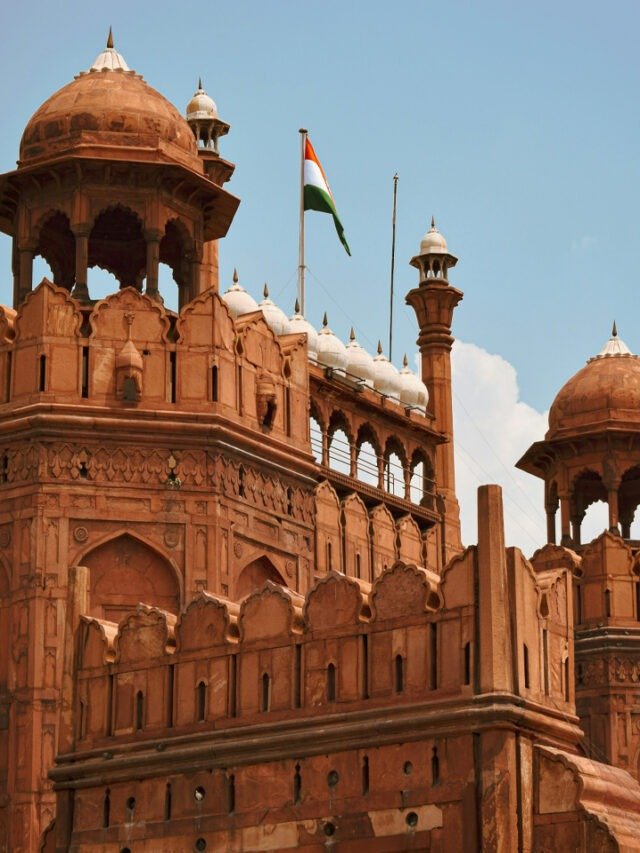By: Aubaid Ahmad Akhoon
In the rich tapestry of poetic expression, metaphors stand as beacons of creativity and insight, illuminating the depths of human thought and emotion. A metaphor is a literary device that transcends the boundaries of the ordinary by drawing striking comparisons between seemingly unrelated entities. Within the realm of Urdu and Persian poetry, the metaphorical brilliance of Allama Iqbal, often hailed as Mufakkir-e-Pakistan (The Thinker of Pakistan), shines resplendently. Among his many metaphorical creations, none is as powerful and enduring as the “Shaheen” or falcon.
The Essence of Metaphor in Poetry
Metaphors are the artistic brushstrokes that transform the canvas of words into a vivid tapestry of imagery and meaning. They allow poets to convey complex ideas, emotions, and concepts by likening them to more familiar or tangible objects. In poetry, metaphors evoke powerful sensations, stimulate the imagination, and invite readers to explore deeper layers of understanding.
Dr. Yusuf Khan writes, “Iqbal’s conscience and emotions are stirred most profoundly by poetry. It’s the manifestation of ‘power’ that drives him, which is why he prefers eagles and falcons over nightingales and moons as metaphors.”
Allama Iqbal’s preference for the symbol of the falcon (Shaheen) is explained in a letter attributed to Zafar Ahmed Siddiqi, where he writes, “The analogy of the falcon is not just a poetic comparison; in this bird, one finds all the qualities of Islamic asceticism. It is self-reliant and fiercely protective; falcon never feeds on prey that has been hunted by someone else’s hands. It is indifferent to building a nest, aiming for great heights, and it is solitary and sharp-sighted.”
According to Iqbal, the above mentioned same qualities are found in a faithful man. He desires to see these same qualities in the youth as well. Apart from the falcon, no other bird can serve as a role model for the youth in this way. In Urdu poetry, no poet has portrayed the falcon from this perspective
One of the most iconic couplets that encapsulate the essence of the Shaheen reads: “Tu Shaheen Hai, Parwaz Hai Kaam Tera, Tere Aage Asmaan Aur Bhi Hain” (You are a falcon; flight is your vocation: You have other skies stretching out before you). These lines are a testament to Iqbal’s ability to distill profound wisdom into succinct verses. The metaphor of the falcon embodies the idea that every individual possesses the potential to rise above mediocrity and achieve greatness.
Iqbal’s poetry beautifully contrasts the falcon’s unbounded ambition with the limitations of other birds. He writes, “Parwaz Hai Dono Ki Issi Aik Fiza Mein, Kargas Ka Jahan Aur Hai, Shaheen Ka Jahan Aur” (The vulture and the falcon soar in the same air, but in worlds apart). Through this analogy, Iqbal underscores that while some may settle for a mundane existence, the Shaheen aspires for grandeur.
Furthermore, Iqbal’s verses depict the arduous path to greatness. He pens, “Qana’at Na Kar Alam-e-Rang-o-Bu Par Chaman Aur Bhi, Ashiyan Aur Bhi Hain” (Do not be content with the world of color and smell; other gardens there are, other nests too). Iqbal urges individuals to surpass the ordinary and venture into uncharted territories, reminding us that there is always more to explore, learn, and achieve. Iqbal is emphasizing the idea that there is more to the world than what meets the eye. He suggests that beyond the ordinary world with its colors and fragrances, there exist additional realms of existence, both metaphorically and perhaps even spiritually.
Iqbal’s portrayal of the Shaheen resonates with his broader philosophy of self-realization. He encourages individuals to rise above their circumstances, embrace their inherent potential, and strive for excellence. The Shaheen, in Iqbal’s poetry, becomes a symbol of unbounded aspiration, the pursuit of knowledge, and the quest for spiritual enlightenment. Just as the falcon defies its limitations to soar to greater heights, Iqbal invites us to overcome obstacles and realize our fullest potential.
In the poem “Shaheen” bal-e-Jibril,” Allama Iqbal presents the (Shaheen) falcon in the following way:
Khayabanion Se Hai Parhaiz Lazim, Adaeen hain In ki Bohat Dilbarana
Hawa-e Bayaan Se Hoti Hain Kari, Jawaan Mard Ki Zarbat –e Ghaziyana
Hamaam o kabotar ka bhoka nahi main, Ke Hai Zindagi Baaz ki Zaahidana
Jhapṭna, Palṭna, Palṭ Kar Jhaptna, Lahoo Garam Rakhne Ka Hai Ek Bahaana
Ye Poorab, Ye Pacham, Chakoron Ki Dunia Mera Neelgun Aasmaan Baikarana
Parindon Ki Dunya Ka Darvesh Hoon Main, Ke Shaheen Banata nahi aashiyana
Translation
One must shun the garden dwellers
They have such seductive charms!
The wind of the desert is what gives
The stroke of the brave youth fighting in battle its effect
I am not hungry for pigeon or dove
For renunciation is the mark of an eagle’s life
To swoop, withdraw and swoop again
Is only a pretext to keep up the heat of the blood
East and West these belongs to the world of the pheasant,
The blue sky… vast, boundless ….is mine
Alama Iqbal presents the concept of the “Shaheen” (falcon) as a symbol of strength, independence, and spiritual elevation. The central thesis of this poem revolves around the idea that the Shaheen represents a lofty and free-spirited individual who is detached from the ordinary desires of life and is instead focused on a higher purpose, which is often associated with spiritual and intellectual pursuits.falcon’s ability to swoop, turn, and swoop again symbolizes its unwavering determination. It keeps the blood warm with the passion for adventure.
Iqbal contrasts the Shaheen with “garden dwellers” and “pigeon or dove,” symbolizing those who are content with a mundane and comfortable existence. The Shaheen, on the other hand, is depicted as someone who seeks challenges, is unbound by geographical or worldly limitations (“East and West”), and embraces the vastness of the universe as their own.
The poem encourages readers to aspire to the qualities of the Shaheen, emphasizing the importance of courage, perseverance, and the pursuit of higher ideals. It serves as a call to break free from the constraints of a conventional life and soar to greater intellectual and spiritual heights. Ultimately, Iqbal’s “Shaheen” symbolizes a spiritual and intellectual awakening and a yearning for a purposeful and transcendent life.
In conclusion, the Shaheen in Allama Iqbal’s poetry is more than a mere bird; it is a representation of the human spirit’s ceaseless journey towards self-discovery and growth. Through these verses, Iqbal inspires us to break free from the constraints that hold us back, encouraging us to emulate the Shaheen’s audacity in our pursuit of excellence. As we read these lines, let us remember that, like the falcon, our potential knows no bounds, and our dreams can propel us to the highest realms of achievement. (The author is a renowned Columnist & Motivational Speaker and an Associate Editor of the Weekly Publication ‘Education Quill.’)












